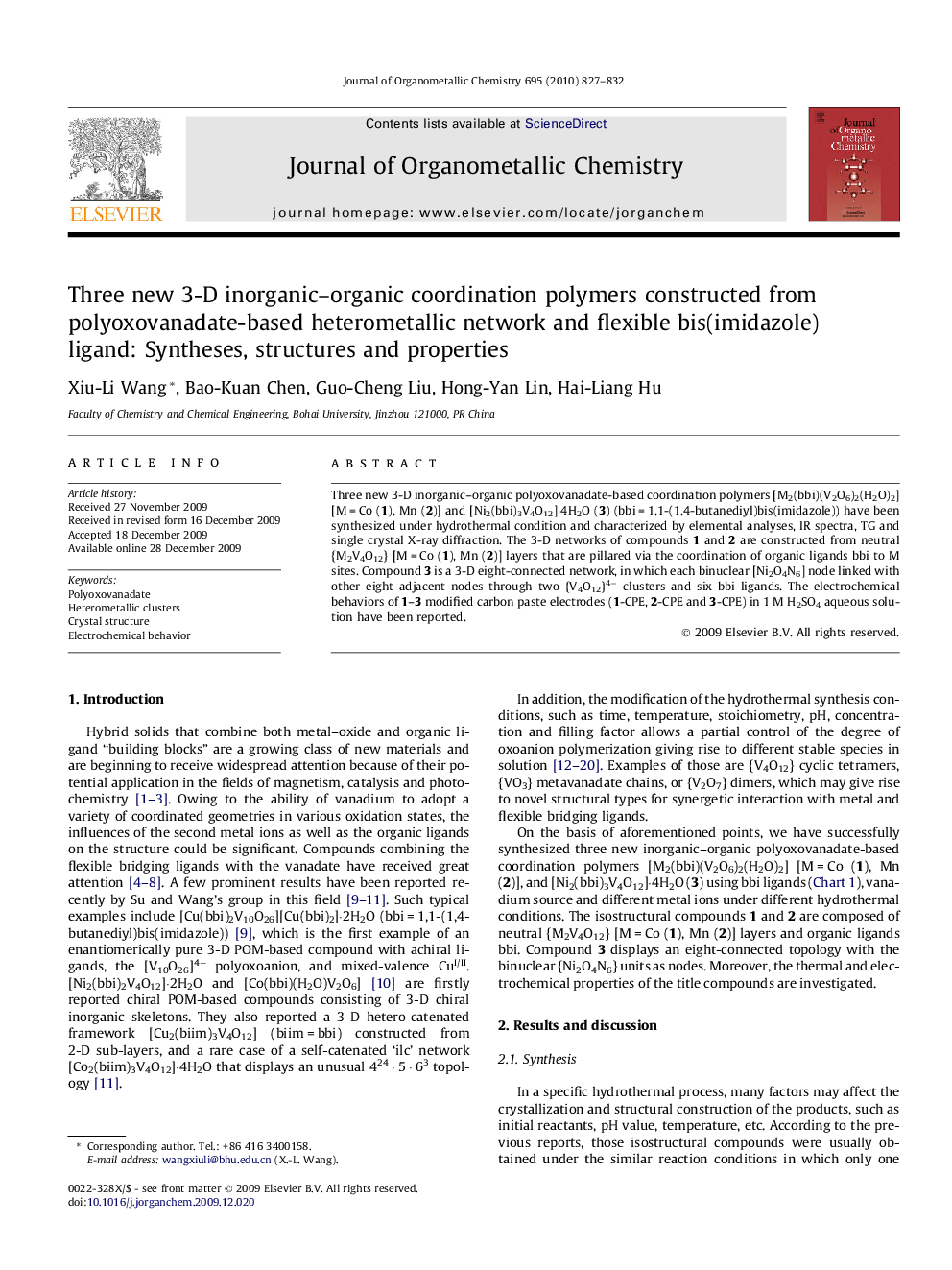| Article ID | Journal | Published Year | Pages | File Type |
|---|---|---|---|---|
| 1324243 | Journal of Organometallic Chemistry | 2010 | 6 Pages |
Three new 3-D inorganic–organic polyoxovanadate-based coordination polymers [M2(bbi)(V2O6)2(H2O)2] [M = Co (1), Mn (2)] and [Ni2(bbi)3V4O12]·4H2O (3) (bbi = 1,1-(1,4-butanediyl)bis(imidazole)) have been synthesized under hydrothermal condition and characterized by elemental analyses, IR spectra, TG and single crystal X-ray diffraction. The 3-D networks of compounds 1 and 2 are constructed from neutral {M2V4O12} [M = Co (1), Mn (2)] layers that are pillared via the coordination of organic ligands bbi to M sites. Compound 3 is a 3-D eight-connected network, in which each binuclear [Ni2O4N6] node linked with other eight adjacent nodes through two {V4O12}4− clusters and six bbi ligands. The electrochemical behaviors of 1–3 modified carbon paste electrodes (1-CPE, 2-CPE and 3-CPE) in 1 M H2SO4 aqueous solution have been reported.
Graphical abstractThree new 3-D inorganic–organic polyoxovanadate-based coordination polymers [M2(bbi)(V2O6)2(H2O)2] [M = Co (1), Mn (2)] and [Ni2(bbi)3V4O12]·4H2O (3) (bbi = 1,1-(1,4-butanediyl)bis(imidazole)) have been synthesized under hydrothermal condition and characterized by elemental analyses, IR, TG and single crystal X-ray diffraction. The electrochemical behaviors of 1–3 modified carbon paste electrodes have been studied.Figure optionsDownload full-size imageDownload as PowerPoint slide
